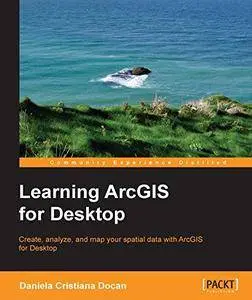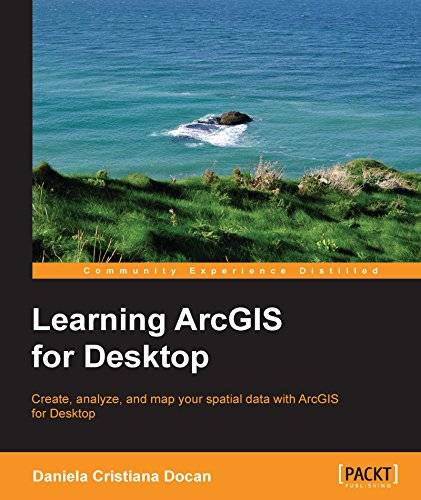Learning ArcGIS for Desktop by Daniela Cristiana Docan
English | March 31, 2016 | ISBN: 1782175792 | True EPUB | 344 pages | 34.4 MB
English | March 31, 2016 | ISBN: 1782175792 | True EPUB | 344 pages | 34.4 MB
Learn how to use ArcGIS for Desktop to create and manage geographic data, perform vector and raster analysis, design maps, and share your results
Solve real-world problems and share your valuable results using the powerful instruments of ArcGIS for Desktop
Step-by-step tutorials cover the main editing, analyzing, and mapping tools in ArcGIS for Desktop
Who This Book Is For
This book is ideal for those who want to learn how to use the most important component of Esri's ArcGIS platform, ArcGIS for Desktop. It would be helpful to have a bit of familiarity with the basic concepts of GIS. Even if you have no prior GIS experience, this book will get you up and running quickly.
What You Will Learn
Understand the functionality of ArcGIS for Desktop applications
Explore coordinate reference system concepts and work with different map projections
Create, populate, and document a file geodatabase
Manage, create, and edit feature shapes and attributes
Built automate analysis workfl ows with ModelBuilder
Apply basic principles of map design to create good-looking maps
Analyze raster and three-dimensional data with the Spatial Analyst and 3D Analyst extensions
ArcGIS for Desktop is one of the main components of the ESRI ArcGIS platform used to support decision making and solve real-world mapping problems. Learning ArcGIS for Desktop is a tutorial-based guide that provides a practical experience for those who are interested in start working with ArcGIS.
The first five chapters cover the basic concepts of working with the File Geodatabase, as well as editing and symbolizing geospatial data. Then, the book focuses on planning and performing spatial analysis on vector and raster data using the geoprocessing and modeling tools. Finally, the basic principles of cartography design will be used to create a quality map that presents the information that resulted from the spatial analysis previously performed. To keep you learning throughout the chapters, all exercises have partial and final results stored in the dataset that accompanies the book. Finally, the book offers more than it promises by using the ArcGIS Online component in the tutorials as source of background data and for results sharing.



